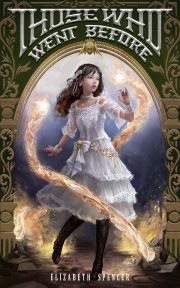The Impact Different Font Styles And Sizes Have On Readers’ Experience
by Amber Massey
If you’re about to self-publish your next great fantasy or science fiction novel, the last thing you might want to think about is page design, font style, or font size. But consider this: multiple studies have concluded that the typeface you choose can make or break a reader’s experience. It can either help pull them into your story, or it can repel them. The choice is up to you!
But First: Terminology You Need to Know
Don’t let the terminology intimidate you. Here’s a handy breakdown to guide you through the world of fonts:
- Typefaces: This refers to the font’s name, like the trusty Helvetica or the much-derided Comic Sans. The typeface refers to the actual design of each letter but doesn’t include customization like size (e.g. 12 points) or weight (e.g. bold or italics).
- Fonts: A font refers to both the design (e.g. Times New Roman) and the width and height (e.g. bold and 12 points). Think of it as a customization of the typeface. A typeface is the “big bucket” while fonts are the various custom pieces you might find in that bucket.
With the digital design of documents, these terms are often interchanged. But if you use them correctly when talking to your publisher or your book designer, you’ll impress your colleagues, for sure.
How Can Font and Typography Make Your Science Fiction More Convincing
In a story in the New York Times, an author shared unusual accounts of asteroids and dangers in outers pace. The story ended with a poll based on this question: “Is it true that “we live in an era of unprecedented safety?”
What readers of the newspaper didn’t know is that for a few days, the page loaded the same article in a different typeface every time. It was a test to see if people might find statements in the article more or less believable based on typeface.
The results indicated that true statements in articles using the Baskerville font were more likely to be accepted and less likely to be dismissed by people. Comic Sans inspired the least confidence. So, if you want to influence people into really immersing themselves into your fictional world, consider a typeface like these that inspires trust and belief.
Typography and Fonts Affect Readability
There’s a Zen phrase that asks, “If a tree falls in the forest and no one is around to hear it, does it make a sound?” For writers, here’s a different question: If you write a story and no one is able to read it, have you really told it?
Typography and fonts have a big impact on readability. If you make people struggle to read your words, they’ll give up. They’ll shut the book, turn off their Kindle or stop following your blog. Keep your fiction accessible to the largest audience as possible by:
- Using a font that’s at least 8-12 points in size. In a study on how aging affects reading, this size was the most readable for young and old alike.
- Choosing a typeface in the sans serif, monospaced, or roman styles. According to researchers, this improves readability for people with disabilities like dyslexia, which could statistically affect a staggering 10 percent of your audience.
- Picking a serif font specifically in cases when using tiny print. A study in the Vision Research scientific journal discovered that this can help improve legibility.
Taken together, the research is clear: If you want your next piece of science fiction or fantasy to reach as many people as possible, and if you want to improve both reading comprehension and reading speed, don’t underestimate the effects of a good typeface.
Fonts Can Make Your Readers Feel Specific Emotions
Whether you’re writing a romantic comedy set in a distant galaxy, or creating a thriller set in a secret government lab, your story needs to pack an emotional punch. And the type of emotions you want to convey in your fiction could guide you in terms of choosing a font.
In a study conducted at Wichita State University, researchers tested dozens of fonts with hundreds of participants. They found that monospaced fonts made readers feel like what they were reading was unimaginative and boring. Serif fonts made people feel like what they were reading was mature and practical, while script fonts inspired feelings of humor.
Line spacing, book dimensions and layout also play a role in the emotions a reader feels. Studies have found that people enjoy a book more when it has clean, well-spaced and professionally designed pages.
How to Use Fonts Wisely
Besides choosing a font that improves your reader’s experience, keep these pointers in mind:
- Don’t be distracted by what looks “cool” or “new.” Classic choices like Baskerville keep your readers from getting distracted or annoyed.
- It’s okay to pair fonts to add emphasis or visual interest, but don’t do it for variety’s sake alone. Use it for emphasis, or to help guide a reader. For example, is your character reading an email? Share the email with a reader in a modern, tech-inspired font to make the page more visually interesting and also to make the experience more believable.
- Pay attention to size and layout. Clean, minimal design lets your readers focus on your narrative, and a size 8-12 font makes your writing approachable and lets as many people as possible enjoy your science fiction.
•••
Amber Massey is a wordsmith and communications enthusiast with over 10 years of experience. Editing is her passion. New media is her medium. She is currently the CEO of Mellel, a powerful app redefining word processing for Mac.


